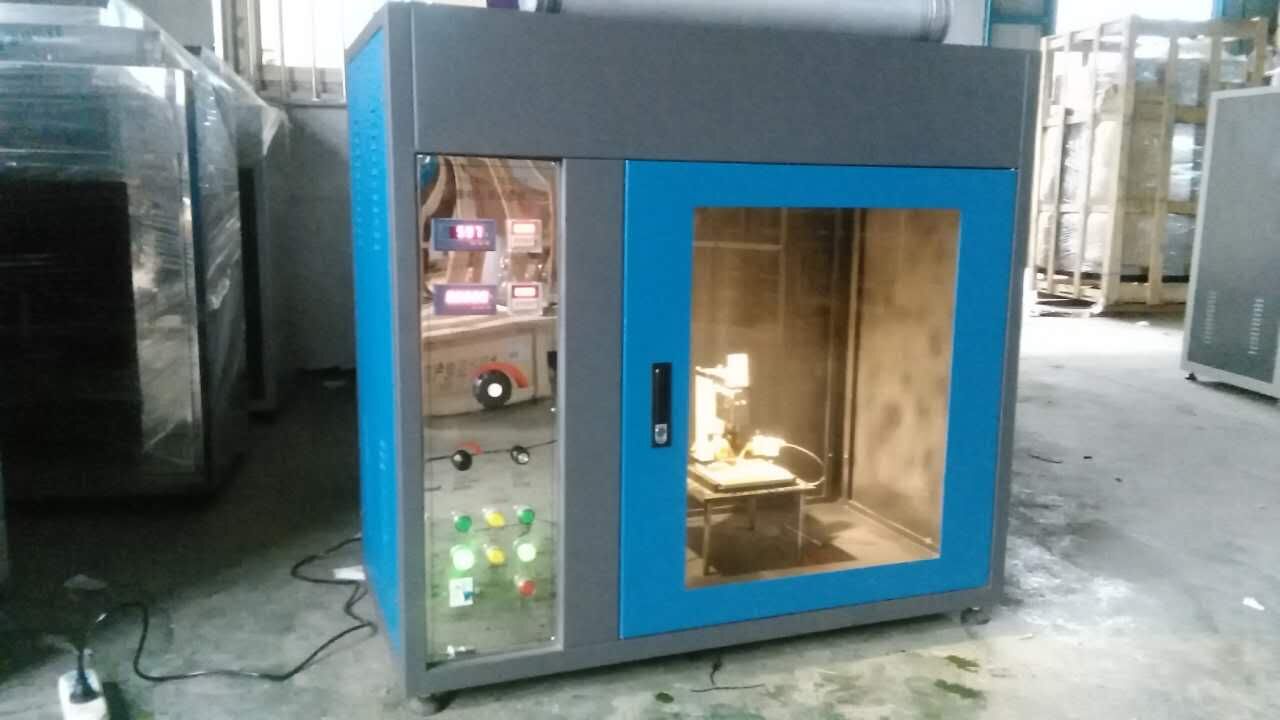
高压漏电起痕试验机-6000V summary:
Under the influence of humidity and impurities in electrical products, insulation leakage may occur between charged parts of different polarities or between charged parts and grounded metals, resulting in electric arcs that can cause breakdown and short circuits in electrical appliances or material erosion due to discharge, and even ignite and cause fires. Leakage tracing test is a destructive test conducted on insulation materials to simulate the above situation. It is used to measure and evaluate the relative resistance of insulation materials to leakage tracing under the action of electric field and impurity water at a specified voltage. It is suitable for solid electrical insulation materials and products of electrical and electronic products, household appliances, such as relay sockets, transfer switch covers, contactors, etc.
高压漏电起痕试验机-6000V 概述:
在电器产品受潮湿和杂质环境的影响下,不同极性带电部件之间或带电部件与接地金属之间可能会引起绝缘上的漏电,产生的电弧对电器造成击穿短路或由于放电使材料电蚀损,甚至起燃导致火灾。漏电起痕试验就是模拟上述情况对绝缘材料进行的一种破坏性试验,用以测量和评定在规定电压下,绝缘体在电场和含杂质水的作用时的相对耐漏电起痕性,适用于电工电子产品、家用电器的固体电器绝缘材料及其产品,如:继电器插座、转换开关盖、接触器等……。
performance index
1. Electrode: 0.5mm thick Material: Stainless steel;
2. Distance between upper and lower electrodes: 50.0mm?0.1;
3. Test voltage: adjustable from 100V to 6000V;
4. Voltage regulator: Output: adjustable from 0 to 250V, capacity 5KVA;
5. Test Transformer: Capacity 5KVA, maximum output voltage AC6000V (or DC6000V optional);
6. High precision voltage regulator: output AC220V power 6000W, accuracy?1%;
7. When the circuit current is 60mA, cut off the voltage output;
8. Test time: 6 hours;
9. Dropping accuracy: 0.5%;
10. Voltage stability:?1%;
11. Trace detection: According to the standard GB/T653-2003/4.1.2, apply voltage (2.5kV, 3.5kV, and 4.5kV) to the sample and drip the contaminated liquid at a certain flow rate. If the current is below 60mA for 6 hours without current leakage, it is considered to have passed through;
12. Dropping device:
Using a Leifu precision peristaltic pump, the flow range is 0.00185 to 20 milliliters per minute, the working speed is 0.1 to 50 revolutions per minute, and the flow accuracy error is:< 0.5%;
13. Output voltage: AC/DC (switchable)
14. Number of experimental groups: Five groups
15. Control device: using Siemens PLC Taiwan Weilun touch screen control, precise control, simple operation, fully humanized design, test results
The beam automatically generates reports, and the panel thermal printer can print test results in a timely manner;
15. Dimensions (mm): 710 (width)?365 (depth)?760 (height) Box volume: 0.1m3
16. Chassis: Made of SUS304 stainless steel (brushed surface);
17. The sewage tank is made of 316 stainless steel and equipped with a sealing device.
The time constant of the drip device can be adjusted to achieve precise control of the drip volume and drip time interval.
Configuration: It is recommended to choose an electronic weighing device
特点:
试验仪由试验部分和控制部分组成采用一体化设计,方便现场安装和调试。试验箱外壳及结构件采用S304不锈钢或黄铜制造;电极头为不锈钢,耐高温耐腐蚀;滴液计数准确,控制系统稳定可靠。
高电压起痕试验机(含高电压发生器)
依据标准:GB/T6553-2003
characteristic:
The testing instrument consists of an experimental part and a control part, designed in an integrated manner for easy on-site installation and debugging. The outer shell and structural components of the test chamber are made of S304 stainless steel or brass; The electrode head is made of stainless steel, which is resistant to high temperature and corrosion; Accurate droplet counting and stable and reliable control system.
High voltage trace testing machine (including high voltage generator)
According to the standard: GB/T6553-2003

高压漏电起痕测试中交直流电压的切换需要结合测试目的、设备能力及标准要求进行综合调整。
以下是北广精仪仪器设备有限公司的具体步骤和注意事项:
1.理解测试背景与目的
高压漏电起痕漏电起痕(GBT6553-2024)(Tracking):指绝缘材料在电场和污染物(如湿气、导电尘埃)共同作用下,表面逐渐形成碳化导电通路的现象。测试目的是评估材料在高压下的绝缘耐久性。
交/直流差异:
交流(AC):电压周期性变化,导致材料表面放电更频繁,易产生局部电弧。
直流(DC):电压方向恒定,可能加速离子迁移,形成稳定漏电路径。
2.切换交直流电压的关键步骤
(1)设备配置
测试设备要求:需具备交直流输出功能的高压电源(如可编程高压发生器),并配备漏电流监测模块。
电路切换:
手动切换:通过物理开关选择AC或DC输出(需断电操作)。
自动切换:使用可编程电源,通过软件控制输出模式(需确保设备支持无缝切换)。
(2)参数调整
电压等效性:需根据标准调整电压等级。例如:
IEC 60112标准(交流测试):通常使用100~600V AC。
直流等效测试:若标准未明确,需通过实验确定等效直流电压(可能需提高至1.2~1.4倍交流有效值)。
电流限制:设置过流保护阈值,防止材料击穿。
3)测试条件适配
-环境控制:保持温湿度恒定(如23℃/50% RH),避免干扰。
-污染物施加:按标准使用电解液(如NH?Cl溶液),确保交/直流测试条件一致。
3.遵循测试标准
-常见标准:
IEC 60112:规定交流电压下的相对漏电起痕指数(CTI)测试。
ASTM D3638:可能涉及直流测试(需查阅具体版本)。
标准选择:若需对比材料在交直流下的性能,需制定等效测试方案(如相同能量等级)。
4.安全与操作注意事项
安全防护:
-测试前确保设备接地,穿戴绝缘装备。
-直流测试时需注意残余电荷释放(使用放电棒)。
数据记录:
-记录电压类型、失效时间、漏电流曲线等关键参数。
-对比交直流下起痕路径形态差异(如直流可能更易形成线性碳化通道)。
5. 实际应用案例
场景1:研发新材料
需分别在交直流下测试,分析材料抗起痕性能的极化效应。
-场景2:认证测试
根据产品应用环境选择电压类型(如直流设备优先DC测试)。
-常见问题解答
- Q:交直流电压能否直接等值替换?
A:不能。需考虑有效值、材料响应差异,建议通过预实验确定等效电压。
-Q:切换时是否需更改电极配置?
A:通常无需更改,但需清洁电极以避免交/直流残留影响。
通过以上步骤,可实现高压漏电起痕测试中交直流电压的安全、准确切换,确保测试结果的有效性和可比性。实际操作中需严格遵循设备手册及标准规范。
业务咨询:932174181 媒体合作:2279387437 24小时服务热线:15136468001 盘古机械网 - 全面、科学的机械行业免费发布信息网站 Copyright 2017 PGJXO.COM 豫ICP备12019803号